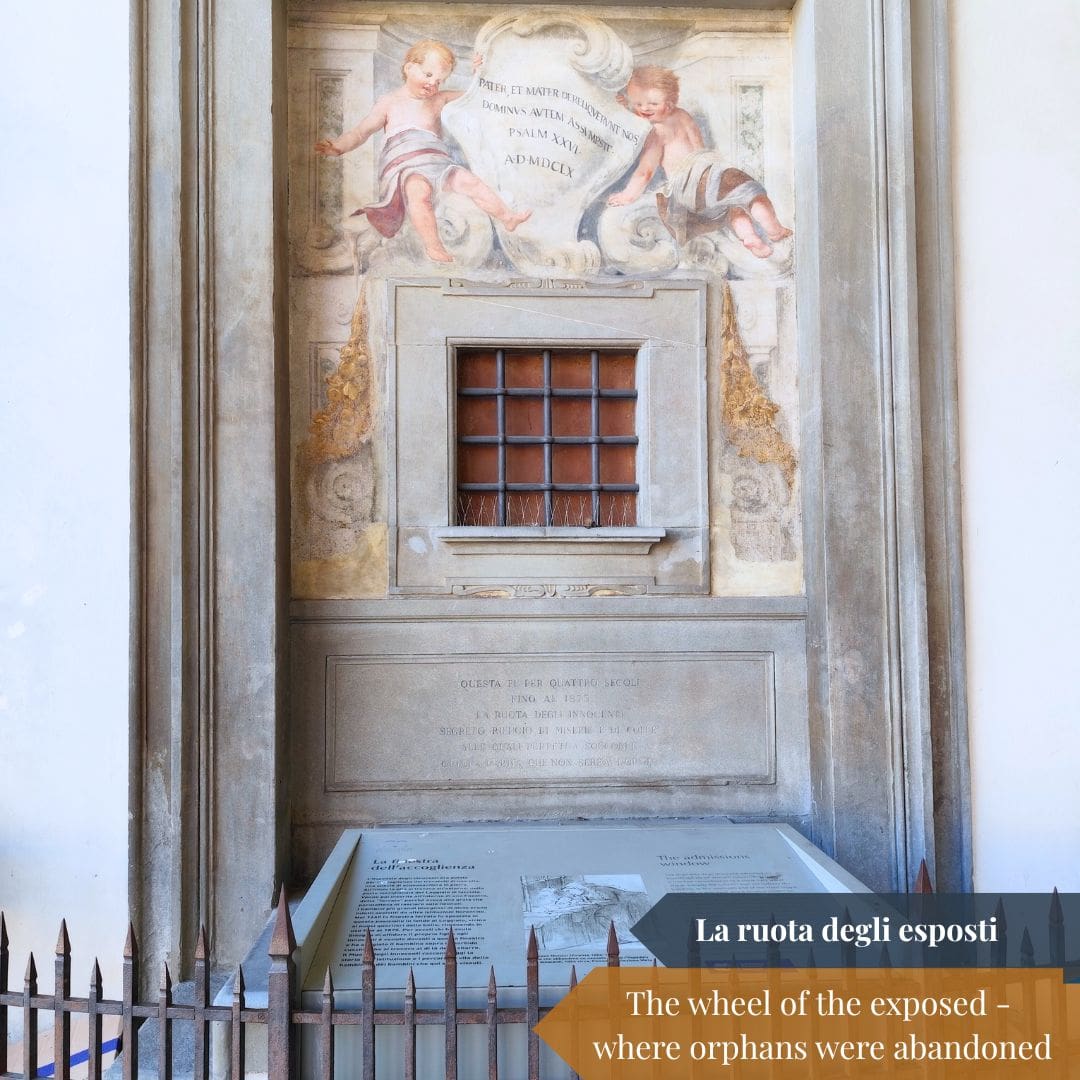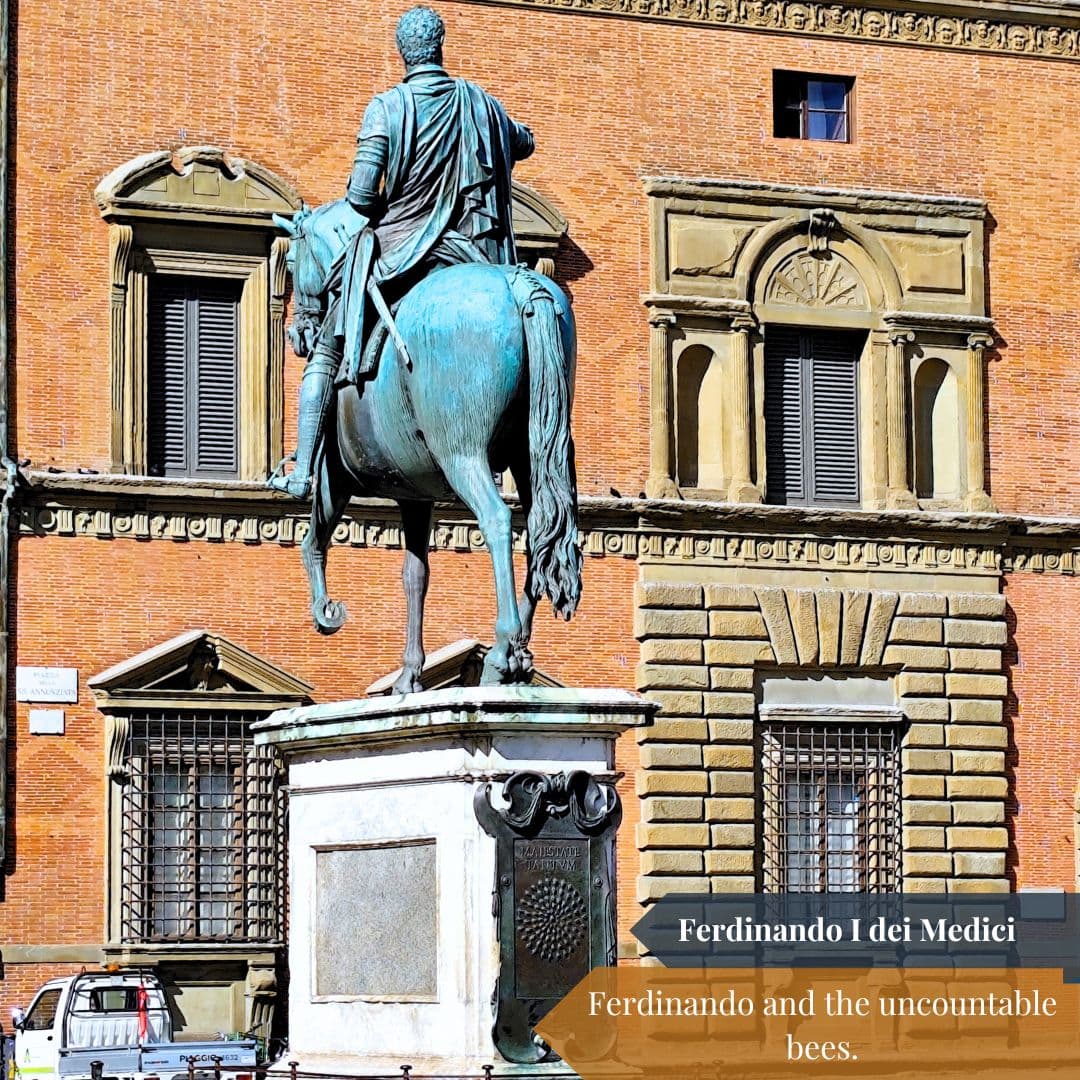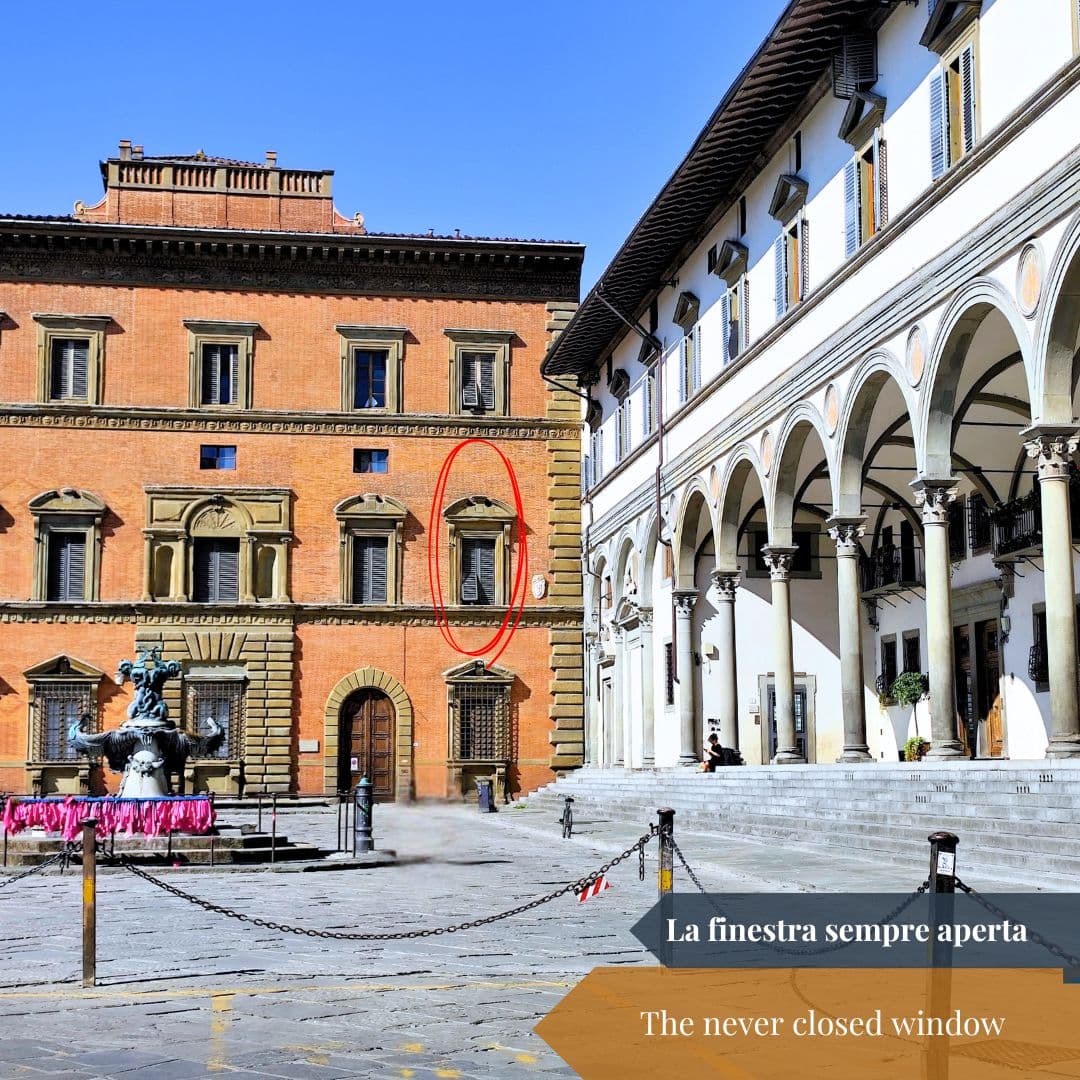Florence’s Piazza Santissima Annunziata is more than just a splendid architectural setting, it’s also a veritable treasure of stories. There’s Brunelleschi’s magnificent portico, once the Ospedale degli Innocenti, a place with a touching history and a refuge for the city’s orphans. At the center of the square, the equestrian statue of Ferdinando I de’ Medici hides a curious challenge: it’s said that it’s impossible to count all the bees in its bas-relief at once. And strolling among these monuments, you can sense the echoes of a lesser-known legend surrounding the nearby Palazzo Budini Gattai. All these stories are best told in autumn, especially on Halloween night, when the atmosphere becomes more evocative and mysterious.
The Hospital of the Innocents:
The countless bees of Ferdinand I
The tormented spirit of Palazzo Budini Gattai:
What are you waiting for to discover the secrets of Piazza Santissima Annunziata?


